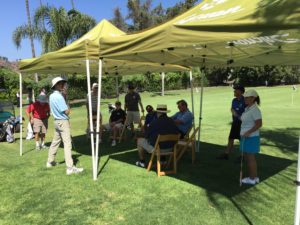Short Game Class benefits student who is over 70
Bob,
I thoroughly enjoyed the session with you and Scott this morning. It was enough different than the other short game class that I attended to make it time well spent. I listened to other people’s comments in the de-briefing and I think all but one or two of them probably applied to me as well.
I have been doing some soul searching about golf, among a lot of other things. I realize that I probably don’t have too many more years to play the game and I am definitely not happy with the way I have been playing. I was pretty excited and committed when we first got together and then things evolved to the point where golf practice started getting pushed aside to make time for a lot of other demands that seemed more important at the time. (I suspect that you may have figured that out.) I realize that there are some limits on what I can expect to achieve but I can certainly do better than I have been and that means I have to adjust some priorities and put in more time and effort on golf. I intend to make this happen and I’ll let you know how it goes. Give me a little time to work on it by myself and then I’ll be out to see you about some fine tuning.
It is truly hard to believe that Walker is a senior in high school and soon to be a college freshman. You and his mom must be very proud of him and rightfully so.
Thanks again and looking forward to seeing you soon.
E.O


